Exhibition | Undercurrent
July 16 - August 16, 2020
Undercurrent explores Maine's waters and the many ways we relate to them: as a playground, a wilderness, and a calling.
Artists include Siri Beckman, Dozier Bell, JT Gibson, Jessica Lee Ives, David Jacobson, Sal Taylor Kydd, Alison Langley, Jonathan Laurence, A. Emmanuelle Marpeau, Richard Remsen, Peggi Kroll Roberts, Colin Page, and Simon van der Ven.
Water as a Playground
"It was, once again, a glorious wave, with hues in its depths so intense they felt like first editions - ocean colors never seen before, made solely for this wave, this moment, perhaps never to be seen again." - William Finnegan, Barbarian Days: A Surfing Life
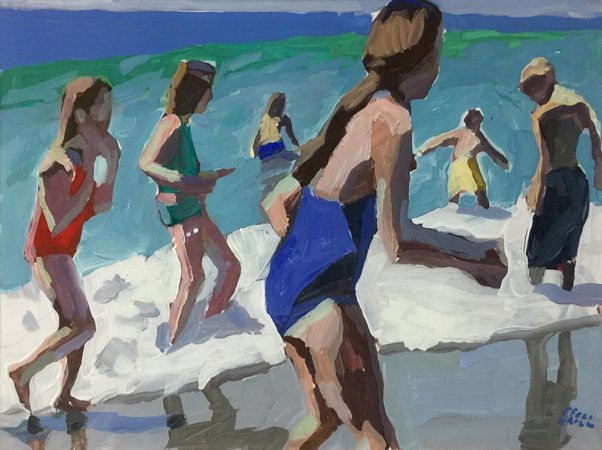
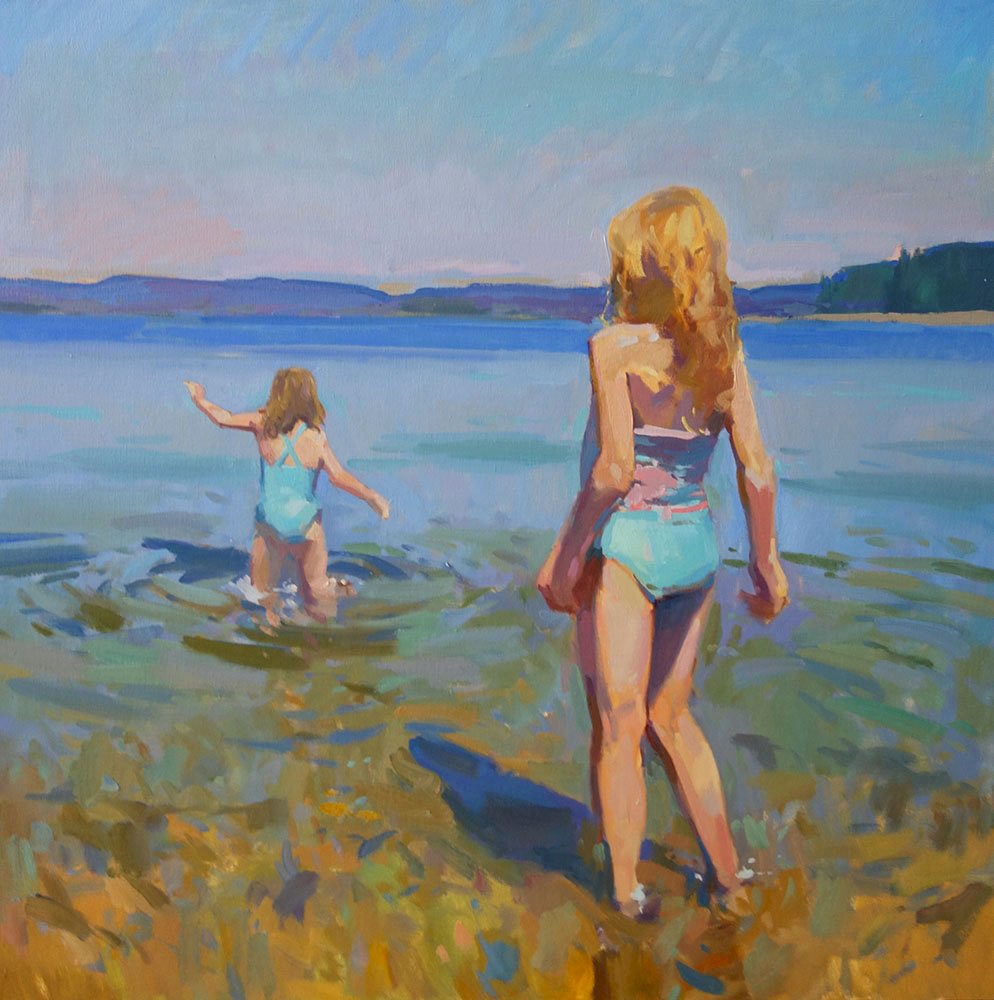
Peggi Kroll Roberts uses strong color and bold brushstrokes to capture the fleeting forms of children running in the surf. Her confident drawing tells the story of kids at play, while her careful color observation surprises us with hues of deep blue and teal green in the water and vibrant grays in the wet sand.
Colin Page shows his children learning through the experience of playfulness and discovery on the coast. Bracing cold water wakes the body, while shifts in blue show changes in depth and gusts of wind on the sea. These observations become second nature to children who grow up with the water. The figures show both curiosity and ease as they dip into the ocean.
"Look at that sea, girls--all silver and shadow and vision of things not seen. We couldn't enjoy its loveliness any more if we had millions of dollars and ropes of diamonds.” - Lucy Maud Montgomery, Anne of Green Gables
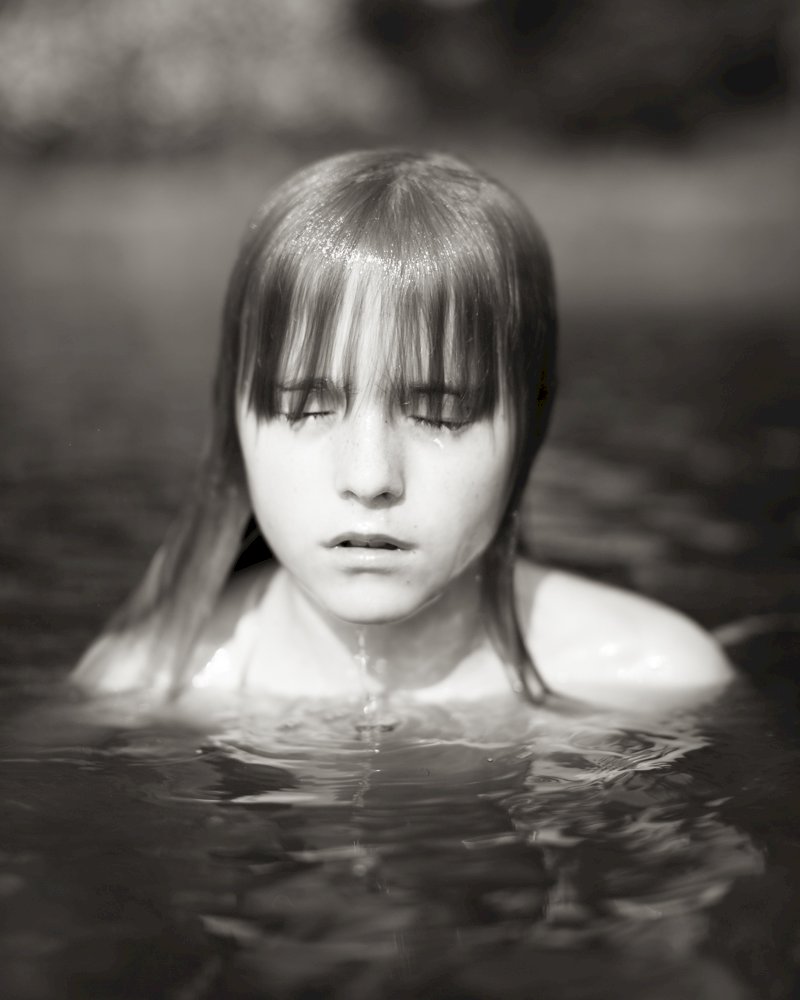
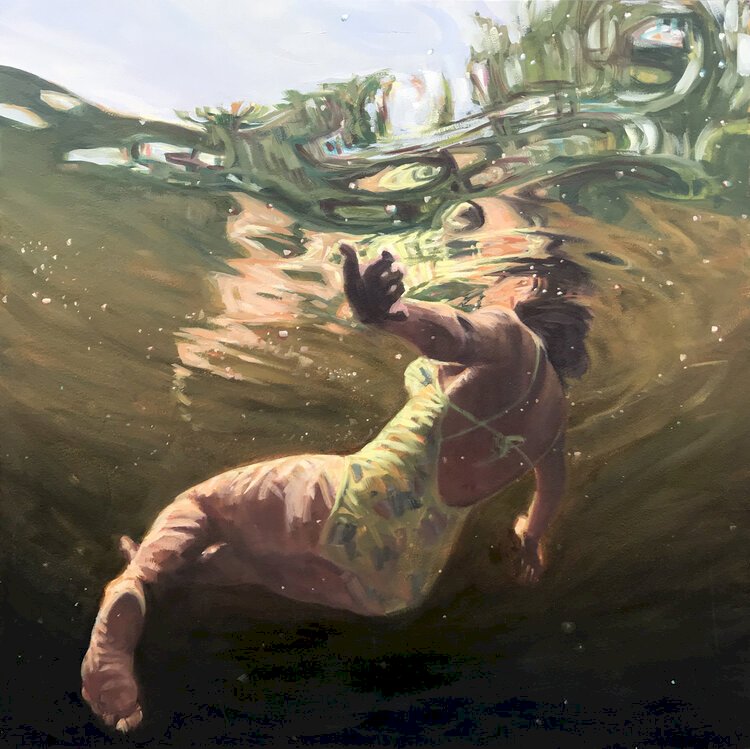
Sal Taylor Kydd captivates us with photographs of our most treasured visceral memories. Her work suspends the fleeting moment, it delights and enchants us by conjuring the vivid sensation of rising soaked out of a summer lake.
Jessica Lee Ives shows a figure submerged in a curative swim beneath a calm surface. The transparency of the water, the clear blue sky, the smooth ripples, the fluid shifts of color and light above and below the surface, the repose of the figure, the easy buoyancy, the head unseen above water, all work to give this painting a sense of tranquility.
Water as a Wilderness
"We need the tonic of wildness...At the same time that we are earnest to explore and learn all things, we require that all things be mysterious and unexplorable, that land and sea be indefinitely wild, unsurveyed and unfathomed by us because unfathomable. We can never have enough of nature.”
- Henry David Thoreau, Walden: Or, Life in the Woods
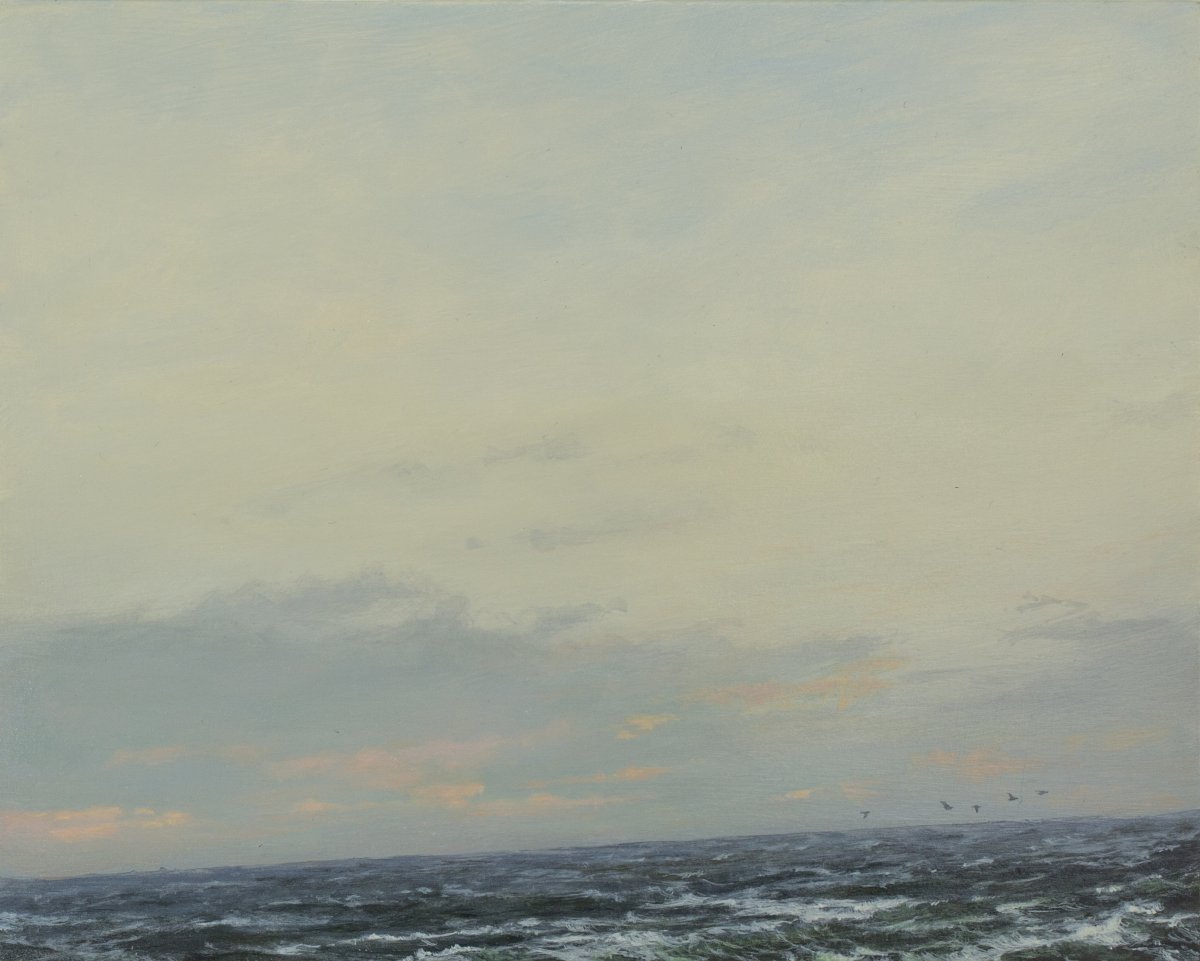
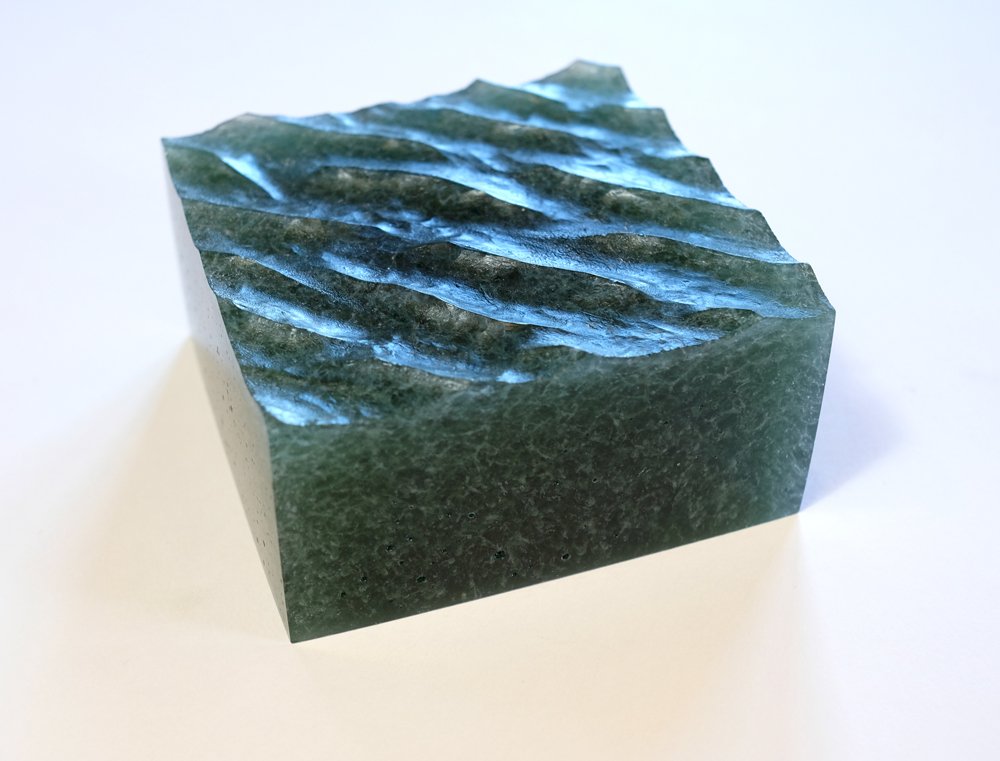
Dozier Bell’s off kilter view of the ocean puts us in a turbulent sea. The big calm sky disorients us by pushing the sliver of dark rough waves so close out of view. The flock of birds along the horizon lends a grand scale to the scene. Her view is richly painted and luminous.
JT Gibson’s bronze casting mimics the fluid movement of waves across the ocean. Without the context of scale, we can see it as a small fragment of rolling ripples or a large swath of wind whipped sea. The form is a reminder of the potential power and energy contained in the ocean. Its small stature tantalizes us with the notion that we can grasp the unknowable sea.
Water as a Calling
“Then the fish came alive, with his death in him, and rose high out of the water showing all his great length and width and all his power and his beauty. He seemed to hang in the air above the old man in the skiff. Then he fell into the water with a crash that sent spray over the old man and over all of the skiff.”
- Ernest Hemingway
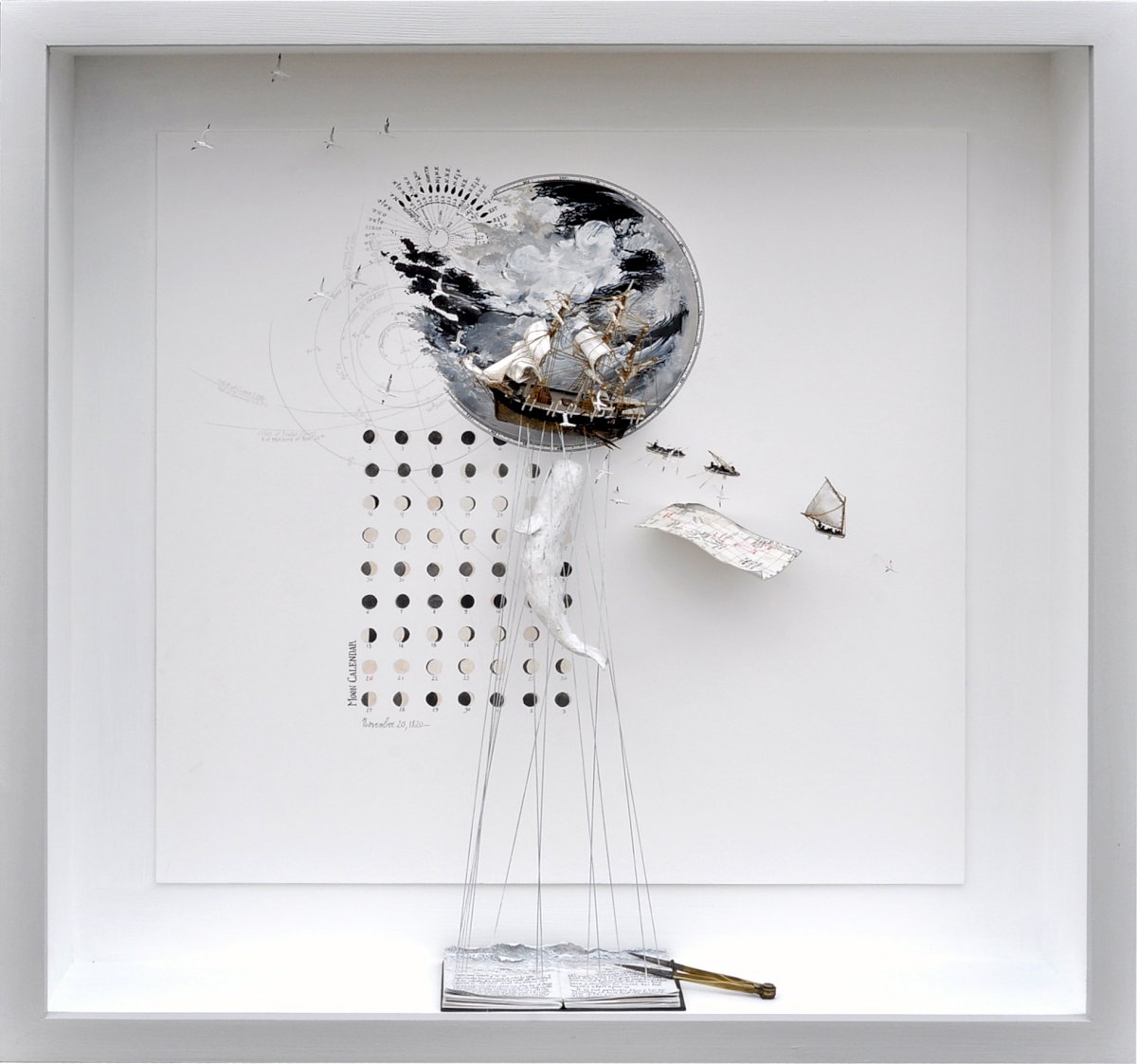
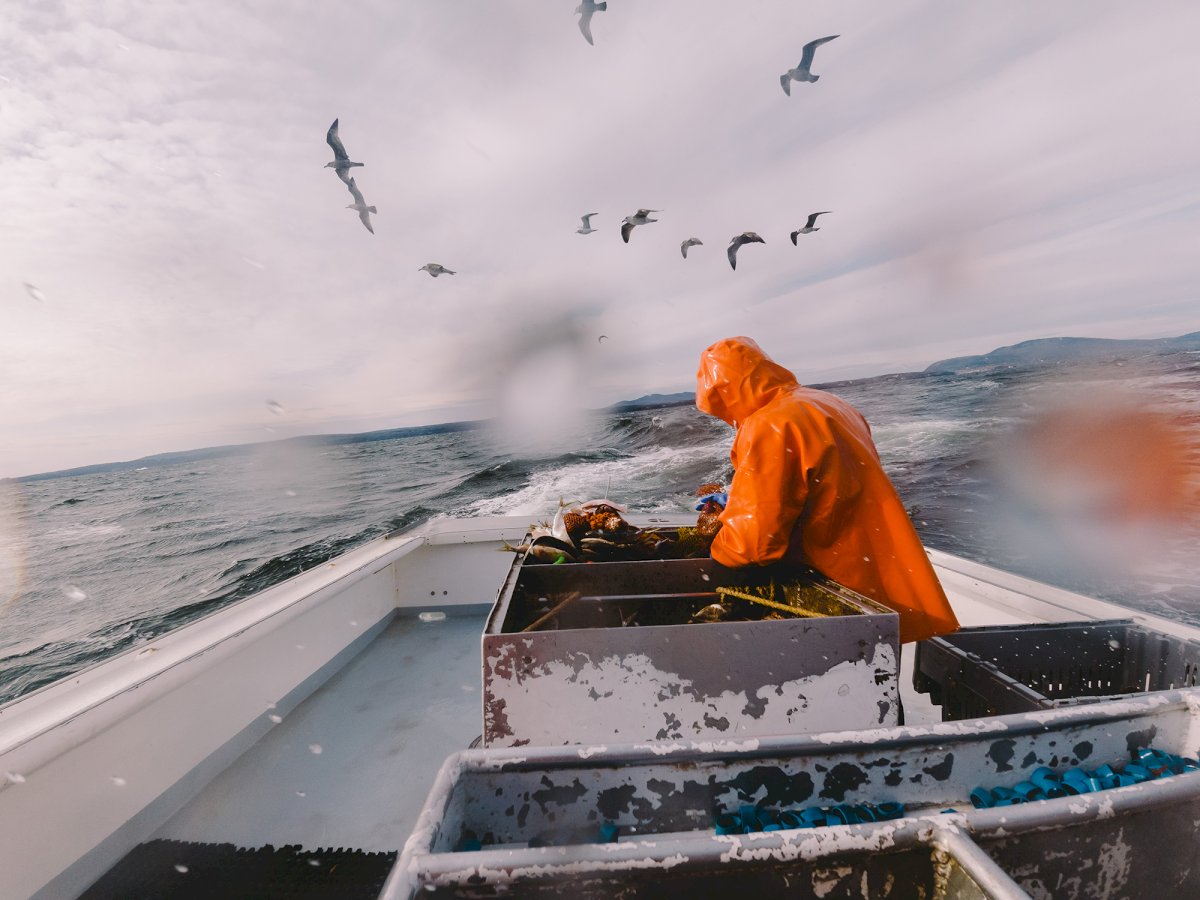
Anne Emmanuelle Marpeau uses historical references to tell stories of maritime history. This piece depicts the day the Nantucket whale boat Essex was sunk by a sperm whale, inspiring Herman Melville to write the 1851 novel, Moby Dick. Her work uses both painting and sculptural elements to give a three dimensional representation of the narrative. These dream like pieces bring us back to an earlier era of fishing and working on the water and remind us of the inherent hardships.
Jonathan Laurence shows us how those who work on the water have a different experience of the ocean. Intense natural beauty is an everyday occurrence from the stern of a lobster boat, but so are long, grueling days of labor. Fishing is not just about what you see above, but understanding the geography and biology below the surface. This connection to the sea is monetary, but also more familiar and intimate than the rest of us can understand.